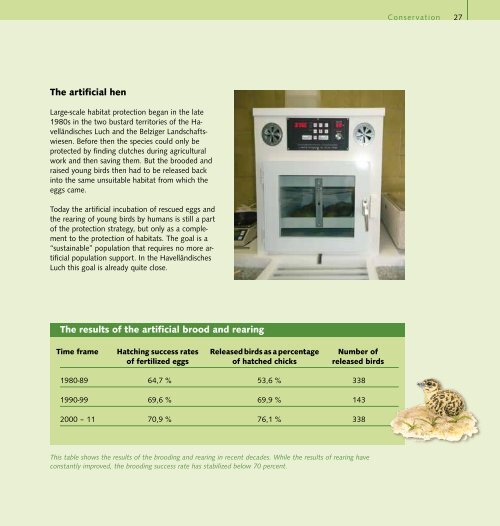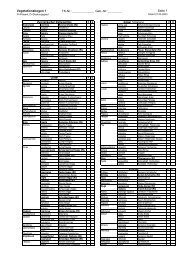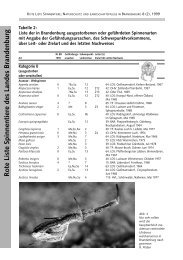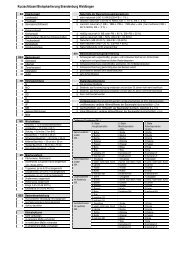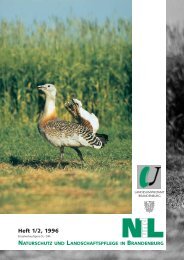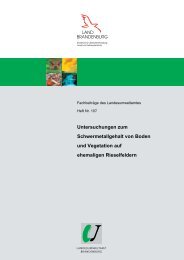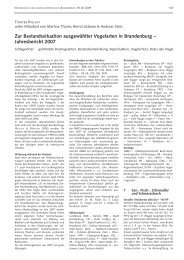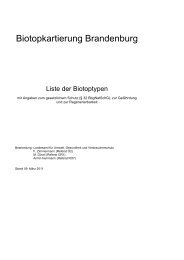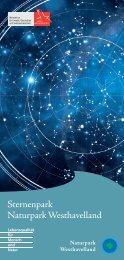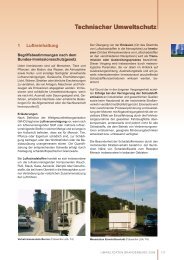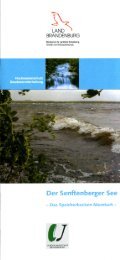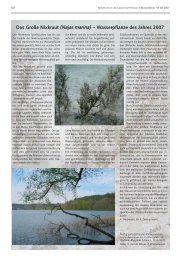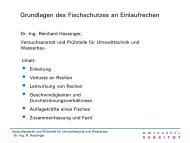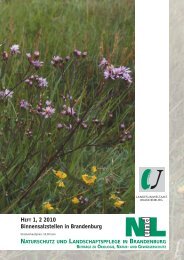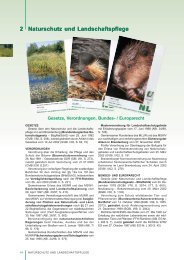the Brandenburg ostrich - Landesamt für Umwelt, Gesundheit und ...
the Brandenburg ostrich - Landesamt für Umwelt, Gesundheit und ...
the Brandenburg ostrich - Landesamt für Umwelt, Gesundheit und ...
Create successful ePaper yourself
Turn your PDF publications into a flip-book with our unique Google optimized e-Paper software.
Conservation27The artificial henLarge-scale habitat protection began in <strong>the</strong> late1980s in <strong>the</strong> two bustard territories of <strong>the</strong> HavelländischesLuch and <strong>the</strong> Belziger Landschaftswiesen.Before <strong>the</strong>n <strong>the</strong> species could only beprotected by finding clutches during agriculturalwork and <strong>the</strong>n saving <strong>the</strong>m. But <strong>the</strong> brooded andraised young birds <strong>the</strong>n had to be released backinto <strong>the</strong> same unsuitable habitat from which <strong>the</strong>eggs came.Today <strong>the</strong> artificial incubation of rescued eggs and<strong>the</strong> rearing of young birds by humans is still a partof <strong>the</strong> protection strategy, but only as a complementto <strong>the</strong> protection of habitats. The goal is a“sustainable” population that requires no more artificialpopulation support. In <strong>the</strong> HavelländischesLuch this goal is already quite close.The results of <strong>the</strong> artificial brood and rearingTime frameHatching success ratesof fertilized eggsReleased birds as a percentageof hatched chicksNumber ofreleased birds1980-89 64,7 % 53,6 % 3381990-99 69,6 % 69,9 % 1432000 – 11 70,9 % 76,1 % 338This table shows <strong>the</strong> results of <strong>the</strong> brooding and rearing in recent decades. While <strong>the</strong> results of rearing haveconstantly improved, <strong>the</strong> brooding success rate has stabilized below 70 percent.


